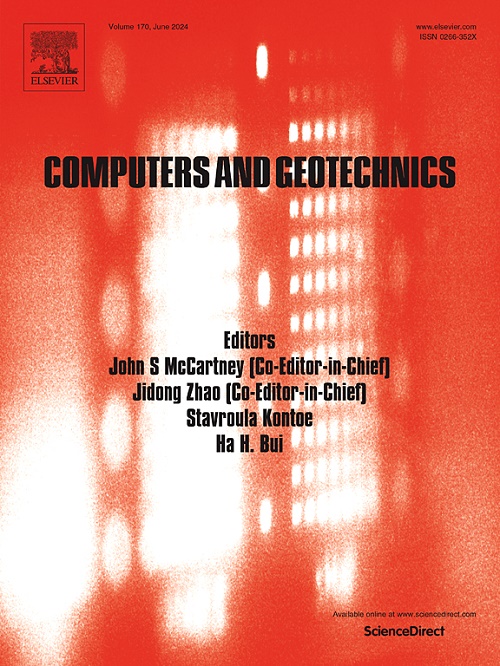Incorporating particle roughness and hardness into contact model to reproduce elastic behaviors of granular soils in DEM
IF 5.3
1区 工程技术
Q1 COMPUTER SCIENCE, INTERDISCIPLINARY APPLICATIONS
引用次数: 0
Abstract
In this work, we present a physically-based contact model incorporating particle roughness and hardness to accurately capture the inter-particle interactions of common geomaterials in DEM based on extensive micromechanical testing results. Specifically, in the contact normal direction, unlike the ideal Hertzian model, the particle roughness-embedded contact model is adopted to characterize the plastic deformation of particle asperities exclusively. In the tangential direction, the traditional MD model is modified with a precise critical slip displacement, enabling a more accurate description of the nonlinear relationship between tangential force and slip displacement. Based on this new contact model, we further calibrate the model parameters for diverse geomaterials, which are rather helpful for future quantitative DEM simulations. Finally, a series of drained triaxial simulations are conducted on uniformly graded spheres to explore the effects of model parameters on the evolution of elastic stiffness with the shear strain, which provides important implications for the elastic behaviors of a variety of geomaterials. Furthermore, the underlying micromechanical processes, particularly those related to the statistics of contact normal and tangential stiffness, which are challenging to access in indoor tests, have been elucidated. This study lays a solid foundation for the future advancement of DEM in the geomechanics community.
求助全文
约1分钟内获得全文
求助全文
来源期刊

Computers and Geotechnics
地学-地球科学综合
CiteScore
9.10
自引率
15.10%
发文量
438
审稿时长
45 days
期刊介绍:
The use of computers is firmly established in geotechnical engineering and continues to grow rapidly in both engineering practice and academe. The development of advanced numerical techniques and constitutive modeling, in conjunction with rapid developments in computer hardware, enables problems to be tackled that were unthinkable even a few years ago. Computers and Geotechnics provides an up-to-date reference for engineers and researchers engaged in computer aided analysis and research in geotechnical engineering. The journal is intended for an expeditious dissemination of advanced computer applications across a broad range of geotechnical topics. Contributions on advances in numerical algorithms, computer implementation of new constitutive models and probabilistic methods are especially encouraged.
 求助内容:
求助内容: 应助结果提醒方式:
应助结果提醒方式:


